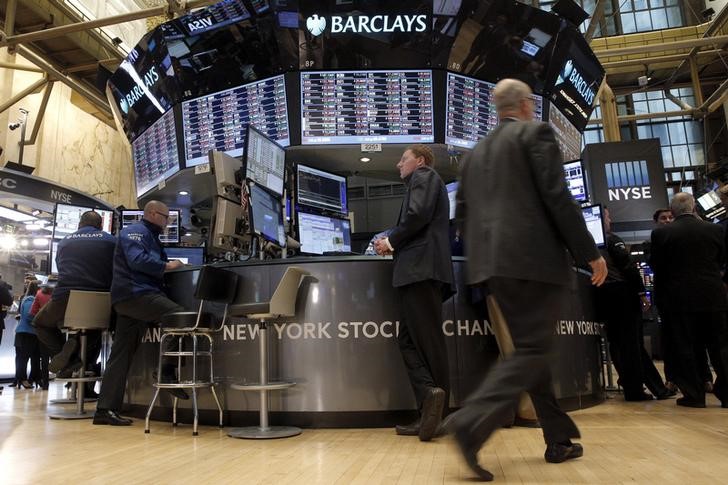By Geoffrey Smith
Investing.com -- Global markets steady after Thursday's sell-off but the froth continues to come off overheated tech names. The U.S. is expected to have added 1.4 million jobs in August, but a bunch of those are one-off hires for the 2020 census. The U.S. government won't shut down in October, and oil prices bounce after a brief panic about global oversupply. Here's what you need to know in financial markets on Friday, September 4th.
1. Global markets stabilize after rout
Global markets steadied after the worst sell off in months on Wall Street on Thursday, as participants came around to the view that the incident was more specific to overheated tech stocks than to global developments.
While markets in the Asia-Pacific region all ended lower, losses of around 1% were nowhere near as severe as those seen in the U.S. on Thursday. European bourses, which had already participated in the downward move on Thursday, rebounded strongly, with bank stocks in particular lifted by the announcement of talks to create the biggest lender in Spain.
The dollar and other traditional havens, meanwhile, failed to gain much traction, with the dollar index settling into a range well below 93 and gold futures up only 0.4% at $1,945 a troy ounce.
2. Jobs report puts fresh light on recovery
The U.S. will publish its official labor market report for the month through mid-August, after a barrage of conflicting signals from other high-frequency data from the labor market this week.
Expectations for the key nonfarm payroll growth range from below 750,000 to over 2 million, indicating the high degree of uncertainty among analysts. The average forecast, according to analysts polled by Investing.com, is around 1.40 million, which would represent a slowdown from July’s 1.76 million but still solid progress, given that the reporting period coincided with a surge in Covid-19 cases across the South and West that put a brake on economic reopening.
However, the number is likely to be inflated by government hiring for the 2020 Census. Private hiring, as measured by ADP’s monthly survey, fell well short of expectations on Wednesday. Jobless claims data released on Thursday, meanwhile, showed over 29 million Americans still claiming benefits as of the middle of August.
3. Stocks set to open mostly higher but froth tech stocks still under pressure
U.S. stock markets are set to open to open modestly higher, stabilizing after Thursday’s sharp sell off.
By 6:30 AM ET (1030 GMT), the Dow 30 futures contract was up 130 points or 0.5% while the S&P 500 Futures contract was up 0.3%.
Nasdaq 100 futures were, however, down another 0.4%, reflecting the extent to which yesterday’s rout was essentially a correction of a rally in a handful of tech stocks rather than a wholesale change in sentiment about the economic outlook.
Apple (NASDAQ:AAPL) stock, whose 8% fall broke records yesterday for the biggest ever one-day loss in market capitalization, was down another 0.1% in premarket, while Tesla (NASDAQ:TSLA) stock was down 1.2%, extending its 9% on Thursday. Zoom Video (NASDAQ:ZM) stock was down 1.4%, while Amazon (NASDAQ:AMZN) stock was down 0.2%.
Elsewhere, a survey by consultancy Smart Insider, cited by the Financial Times, showed that U.S. large-cap company executives sold $6.7 billion of their own stock last month, while the number of sellers topped 1,000, reaching its highest level since August 2018.
4. No government shutdown in October
U.S. Treasury Secretary Steven Mnuchin and House Speaker Nancy Pelosi agreed not to close down the government in October, at the start of the new fiscal year, according to the Associated Press.
The news again points to at least a modicum of cooperation between the two sides as they continue to argue over the scale and shape of a new round of stimulus measures (the necessity of which will be on show in today’s labor market report).
Senate Republicans are due to hold a vote on their proposed $500 billion package next week, according to Bloomberg. That’s still a long way from the latest $2.2 billion package by Pelosi.
5. Oil rebounds after oversupply fright; rig count eyed
Crude oil prices rebounded smartly as a brief bout of panic about looming oversupply subsided.
By 6:35 AM ET, U.S. crude futures were up 1.0% at $41.75 a barrel, rebounding from what was only a half-hearted test of the $40 level that has been the bottom of its range for the last three months. Brent futures, the international benchmark, were up 0.7% at $44.38 a barrel, while gasoline futures were back over $1.20 a gallon.
Baker Hughes’ weekly rig count data will round off the week at 1 PM ET.
